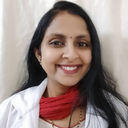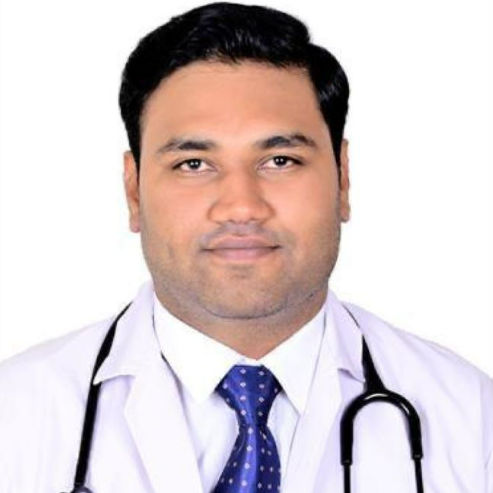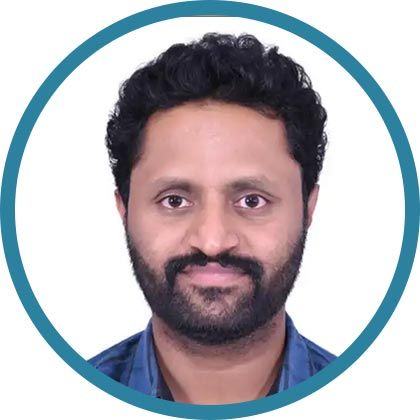Vascular Malformations in Children: A Comprehensive Overview
Birthmarks or vascular malformations often occur in children due to abnormal growth of blood vessels. Learn about its causes, types, and treatment options.

Written by
Last updated on 3rd Jul, 2025
Vascular malformations are abnormal growth of blood vessels that lead to birthmarks on a child. Though these malformations are often present at birth, they may not become apparent until later in childhood or adolescence.
The estimated prevalence of vascular malformations in children ranges from 1% to 1.5% of the population, with specific types showing varying incidence rates. Here's more about its types, causes, symptoms, diagnosis, and treatment procedures.
Types of Vascular Malformations
Following are the four types of vascular malformations:
1. Capillary Malformations
This type of vascular malformation develops in one’s brain. These are enlarged capillaries in small areas of the brain known as capillary telangiectasias. In most cases, these malformations do not cause any problems. However, they may cause haemorrhage occasionally.
2. Venous Malformations
These are clusters of abnormally formed veins that can develop anywhere in the body, including the brain. Venous malformations are the most common vascular malformations in which veins carry blood back to an individual's heart to receive oxygen.
3. Arteriovenous Malformations
AVM, or arteriovenous malformations, is an incorrect tangle of veins and arteries that affects one’s spine or brain. In this case, the arteries pump blood into the veins directly instead of capillaries. The blood is transferred through the nidus (a cluster of channels).
4. Lymphatic Malformations
These are dilated lymphatic channels that form fluid-containing cysts. These cysts develop into soft tissues of one's neck, face, and armpit (axillary) area.
Causes and Risk Factors of Vascular Malformation
Arteries, veins, and lymph vessels that develop before birth but can become visible at different stages of life are called vascular malformation.
Though the actual cause of this condition has not yet been discovered, in some cases, it occurs due to genetic abnormalities.
The most common genetic abnormalities are those in the local tissues, and the inherited ones are less common.
For instance, lymphatic and venous malformations are generally associated with a syndrome called Klippel-Trenaunay (issues in the development of bones, blood vessels, soft tissues, etc.).
However, the association of HHT (haemorrhagic telangiectasia) and pulmonary arteriovenous malformation is said to have been genetically inherited.
Symptoms and Clinical Presentation of Vascular Malformation
The symptoms of vascular malformations may differ depending on their type. Here are some of the common symptoms of vascular malformations:
A raised birthmark in blue, red, purple, black, or brown
Leakage of blood or lymph fluid from skin lesions
Functional problems like walking, swallowing, bending a joint, etc.
Sturge-Weber syndrome (facial birthmark caused by abnormal blood vessels in the brain)
Cosmetic issues
Seizures, paralysis on the side of the body, headaches, etc., in case of AVM in the brain
Body ache, swelling, organ damage, blood clotting, etc.
Infection (primarily due to lymphatic malfunctions)
Blue rubber bleb nevus syndrome (rubbery textured blue or purple blister-like lesions under the skin)
Klippel-Trenaunay syndrome
Skeletal anomalies
Congenital lipomatous overgrowth (non-hereditary disorders affecting the soft tissues in one’s body)
Maffucci syndrome (development of multiple benign cartilage tumours within bones)
Proteus syndrome (overgrowth of tissues involving embryonic lineages)
Gorham-Stout syndrome (rare skeletal condition), etc.
Consult Top Paediatrician
Diagnosis of Vascular Malformations
Doctors check the patient's history and conduct physical tests to determine whether the individual has vascular malformations or any other vascular abnormality. Vascular malfunction is a non-cancerous growth of one's blood vessels involving single or multiple blood vessels.
Doctors ask for imaging tests such as MRI (Magnetic Resonance Imaging), ultrasound, and angiography (dye is injected to outline the image of blood vessels in an X-ray) to diagnose vascular malformations.
Complications and Associated Conditions
Vascular malformations that can be observed generally do not cause many issues other than swelling or pain. However, here are some complications that one can expect from certain types of vascular malformations:
High flow or large malformations often cause heart failure if left untreated for long
AVMs, if formed in the spine or brain, can affect the oxygenated blood flow to one's brain. It can lead to life-threatening issues like intracranial haemorrhage (bleeding in the brain), stroke, etc.
Vascular malformations in the kidney, liver, uterus, or other solid organs can cause organ dysfunction.
Treatment Options for Vascular Malformation
Here are some of the common treatment procedures for vascular malformations:
1. Laser Treatment
This procedure is used to treat small blisters on the lining of one’s mouth or surface of the tongue, called lymphatic vascular malformations. Lasers reduce the discoloration of the bluish lining on the skin around one's mouth or lip. A cooling device is also used along with the laser to treat this malformation.
2. Embolisation
It is a less invasive process that uses particles or "glues" to close the abnormal blood vessels from inside one's body. Embolisation helps shrink the vascular malformation and lowers the risks of bleeding before surgery to remove the malformations.
3. Sclerotherapy
In this process, a chemical is injected into the malformation on one's skin to irritate the walls of blood vessels. This causes the blood to clot, which can stop the flow of blood to that particular area. Inflammation caused due to the irritation then destroys the malformation of vessels in the inner wall and the body replaces it with sclerosis or scar tissue.
4. Surgery
Doctors can perform surgery alone or after sclerotherapy or embolisation. Sometimes, surgery is also performed after an angiography scanning to ensure the need for an embolisation. In case of extensive conditions, doctors avoid disfigurement and only prevent the recurrence of malformation by taking enough tissue.
Prognosis and Long-term Outlook
Preventing vascular malformation is impossible as most are congenital (present at birth).
Individuals can contact genetic counsellors if they have a family history of vascular malfunction.
These counsellors can advise on how to reduce the risks of passing vascular malformations to the next generation.
Individuals with vascular malformations in the form of birthmarks may often develop anxiety and depression, lowering their self-confidence. However, such birthmarks are treatable.
Severe vascular malformations are those that develop in the brain, such as AVMs, and may cause life-threatening issues.
Support and Resources for Families
There are multiple support groups for various types of vascular malformations. Individuals can join these groups to get emotional support from people who have experienced similar conditions. These groups also give the individuals correct information regarding the condition and treatment procedure.
Sharing each other's experiences helps individuals with vascular malformations better cope with the situation. Parents can also join these groups if their children have vascular malformations to understand how to deal with their kids emotionally and physically.
Conclusion
Vascular malformations in children are often complex and challenging but can be effectively managed with early diagnosis and an effective treatment approach. Families can navigate the emotional and medical aspects of these conditions by fostering awareness and providing comprehensive support.
With ongoing advancements in medical care, many children can achieve positive outcomes and thrive.
Consult Top Paediatrician
Consult Top Paediatrician

Dr. Shilpa Sirigiri
Paediatrician
10 Years • MBBS MD PAEDIATRICS
Bengaluru
Apollo Clinic, JP nagar, Bengaluru

Dr. Saheli Dasgupta
Paediatrician
11 Years • MBBS, MD (Paediatrics), Indian Diploma of Paediatric Critical Care Medicine
Kolkata
Sristi Polyclinic, Kolkata

Dr. Akhila Hb
Paediatrician
10 Years • MBBS, MD ( PAEDIATRICS), Fellowship in Asthma and Allergy
Bengaluru
Apollo Medical Center, Marathahalli, Bengaluru
(50+ Patients)

Dr. Guruprasad N
Paediatrician
7 Years • MBBS, MD Peadiatrics, DNB pediatrics
Bangalore
Apollo Clinic Bellandur, Bangalore

Dr Rohith H R
Paediatrician
10 Years • MBBS, DCH, MD, DNB
Bengaluru
Apollo Clinic, JP nagar, Bengaluru
(25+ Patients)